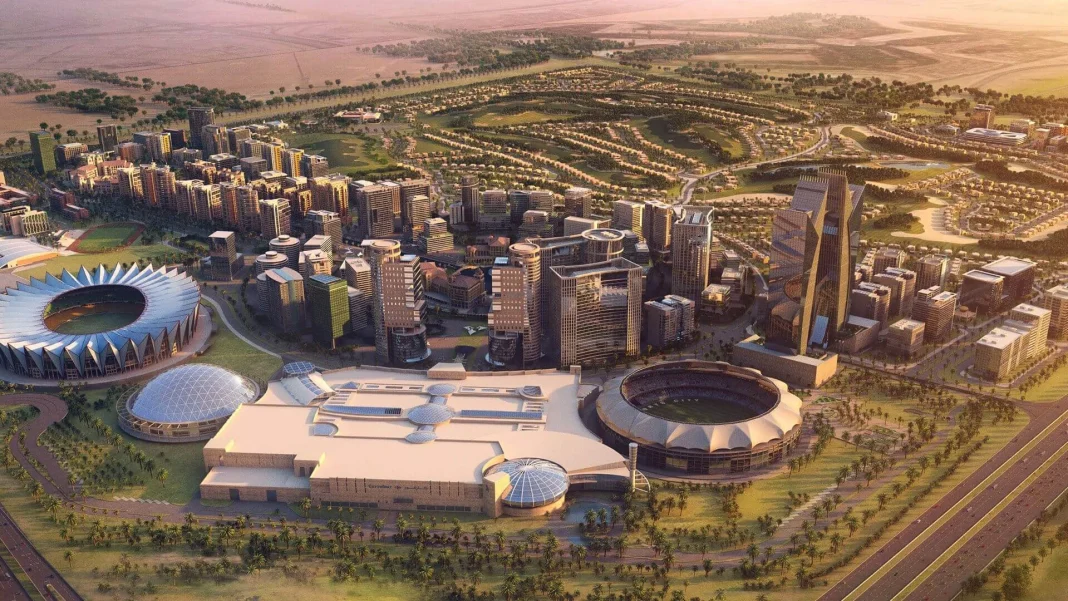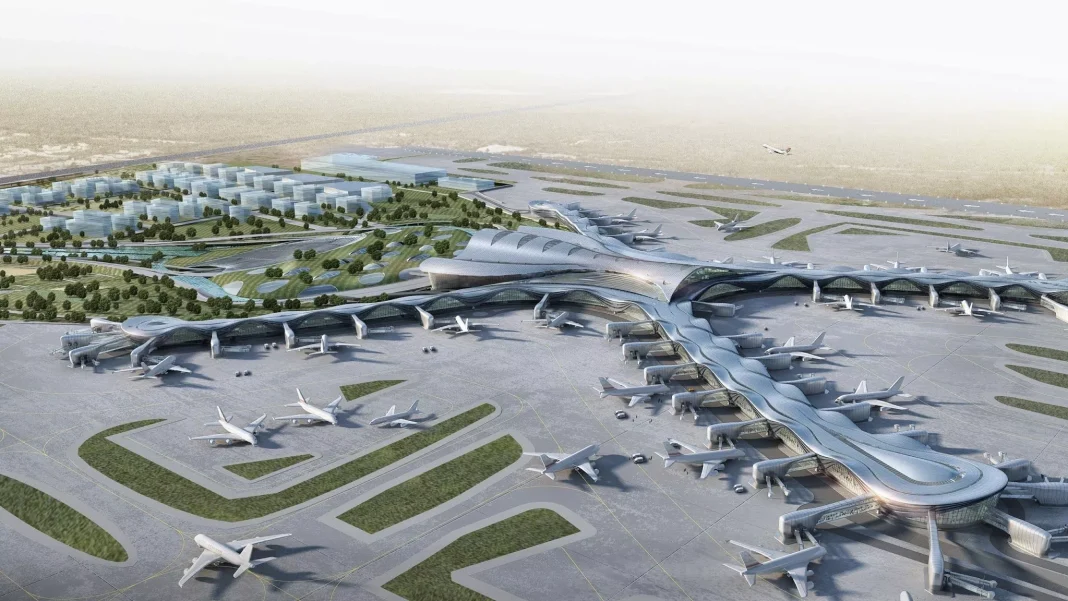When one thinks of the dazzling desert metropolis, the mind almost immediately drifts to the iconic skyscrapers of Downtown, the artificial palm of Palm Jumeirah, or the unrelenting bustle of the Marina. However, this area of Dubai, often overshadowed by its noisier neighbors, hides a fascinating financial dynamic and a potential that many shrewd investors have already begun to explore with growing interest, moving capital discreetly but steadily.
Al Jaddaf, a name that not long ago barely resonated beyond certain local circles, is transforming at breakneck speed, shifting from being a primarily industrial and port area to an enclave where luxury, culture, and real estate opportunities converge in a surprising way.
This transformation is not a matter of chance but the result of meticulous planning and a series of strategic investments that are redefining the profile of this district located on the banks of the historic Creek. What was once primarily known for its traditional dhow shipyards is now evolving into a melting pot of five-star hotels, modern residential complexes, cutting-edge cultural centers, and transport infrastructure that connects it efficiently with the rest of the city.
It is precisely this capital movement, this bet on a different future for Al Jaddaf, that justifies this “side glance,” a mix of curiosity and calculation by those looking to understand where money is flowing in the ever-changing Emirati chessboard.
A NAVAL PAST, A PRESENT OF OPPORTUNITIES
Al Jaddaf has its roots in the maritime history of the region, for decades being the heart of the construction and repair of ‘dhows,’ the wooden vessels that sailed the waters of the Persian Gulf and beyond. This naval heritage was palpable, with the smell of wood and the sound of craftsmen at work as the daily soundtrack, a legacy that sharply contrasts with the nearby skyscrapers, yet still lingers in some corners, recalling the humble and hardworking origins of this part of the city. However, this industrial heritage also meant that for a long time, Al Jaddaf was not associated with the glamour and modernity tied to Dubai.
Nonetheless, its strategic location has always been there, lying in wait. Situated on the west bank of the Creek, relatively close to the international airport, and with reasonable access to the financial center and Downtown, Al Jaddaf had obvious geographic advantages, an advantage that took time to be fully exploited, perhaps due to the inertia of its industrial past or the priority development of other more glamorous areas. A vision for the future and the willingness to invest in infrastructure were needed to begin unlocking the immense latent potential of this Dubai district.
THE ‘PALAZZO VERSACE EFFECT’ AND THE ARRIVAL OF LUXURY
A key turning point in Al Jaddaf’s metamorphosis was, without a doubt, the inauguration of the Palazzo Versace hotel in 2015. This luxurious establishment, with its opulent décor and internationally renowned brand, not only attracted a new kind of visitor to the area but acted as a powerful catalyst for surrounding real estate development, serving as a magnet for subsequent high-end developments, proving that there was an appetite for luxury and exclusivity even in an area previously considered secondary. The arrival of Versace sent a clear signal to the market: Al Jaddaf was ready to play in a new league.
The Palazzo Versace’s wake was soon followed by other high-end hotel and residential projects that saw in Al Jaddaf an opportunity to offer luxury and good connectivity at initially more competitive prices than in Dubai’s established areas. This premium sector entry began to attract a different investor profile, seeking to replicate the initial success and capitalize on the area’s growing reputation, as well as residents who valued both the quality of the new constructions and the relative tranquility of the environment compared to the frenzy of other parts of the city. Money began to flow more decisively towards this corner of the emirate.
GAME-CHANGING INFRASTRUCTURE: CONNECTIVITY IN POWER
The development of Al Jaddaf cannot be understood without the substantial improvement of its transport infrastructure, a critical factor in any large-scale urban project, especially in a city as vast as Dubai. The extension of Dubai Metro’s Green Line, with its own station in Al Jaddaf, marked a qualitative leap in accessibility, significantly easing access to and from other key parts of the city for residents, workers, and tourists alike. This direct connection to the mass public transport network removed one of the main barriers that had historically limited the area’s appeal.
Alongside the arrival of the metro, the improvement and expansion of surrounding road networks, such as proximity to Al Khail Road, one of the city’s main arteries, reinforced road connectivity. Having fast and smooth access routes is essential not only to attract residents needing daily commutes but also to businesses that value logistics and ease of movement, inevitably driving up the value of existing land and properties, creating a virtuous circle of investment and development. Infrastructure investment has therefore been a key piece in Al Jaddaf’s puzzle.
CULTURE AND SPORTS AS NEW INVESTMENT MAGNETS
Beyond bricks and asphalt, Al Jaddaf’s transformation has also incorporated a cultural and recreational dimension that adds significant differential value. The opening of the Jameel Arts Centre in 2018, an elegant space dedicated to contemporary art with a prime location overlooking the Creek, was a major milestone, offering residents and visitors more than just residential or commercial options, and positioning Al Jaddaf as a new cultural hotspot within the map of Dubai. Such facilities enrich urban life and attract an audience interested in high-quality culture and leisure.
Alongside the cultural boost, the area has also seen the flourishing of sports facilities and green spaces, contributing to creating a more pleasant and healthy environment for living. The presence of sports complexes and proximity to parks and waterfront walks by the Creek diversify leisure options and enhance quality of life, creating a more complete and attractive environment for families and young professionals, factors increasingly valued by home buyers and tenants alike. This focus on wellness and leisure bolsters Al Jaddaf’s long-term appeal to investors.
AL JADDAF TODAY: A REAL ESTATE MOSAIC LOOKING TO THE FUTURE
Currently, Al Jaddaf presents a vibrant urban landscape, a mosaic where remnants of its naval past coexist with brand-new apartment towers, luxury hotels, office buildings, and the aforementioned cultural and sports centers. This blend gives the district a unique character within Dubai, creating an urban ecosystem where living, working, and enjoying leisure activities is increasingly feasible, steering away from the mono-functional model of other areas and aiming towards a more integrated and sustainable development. The real estate offerings have significantly diversified, attracting a wider spectrum of buyers and investors.
Al Jaddaf’s future looks promising, with several projects still under development or in the planning stages that will continue to cement its transformation. Continued investment in infrastructure, the maturation of existing projects, and its strategic location ensure that this area will remain on the radar of those seeking opportunities in Dubai’s dynamic real estate market, solidifying its position as a crucial node in the metropolitan development of the future. What was once a mere side glance is today, undoubtedly, a hub of economic activity and a tangible example of how well-directed capital can completely redefine the destiny of a corner of the city.



